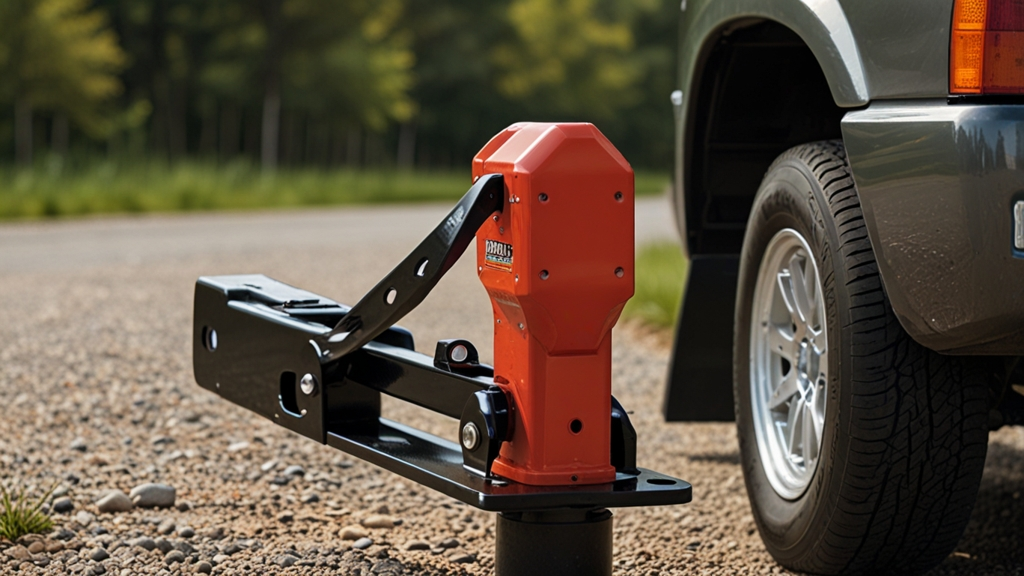Allinurl: automotive towing equipment hitches balls is a critical topic for anyone interested in safe towing practices. Understanding the components of towing equipment, including hitches and balls, ensures you can tow safely and effectively. This article will explore the importance of these components, how to choose the right ones, and the best practices for using them. Let’s dive into this essential guide!
Understanding the Basics of Towing Equipment
When discussing allinurl: automotive towing equipment hitches balls, it’s essential to grasp the basic components involved. Towing equipment typically consists of a hitch, a ball mount, and a trailer ball. The hitch connects the towing vehicle to the trailer, while the ball mount and trailer ball facilitate the connection point for the trailer. Understanding how these components work together is crucial for safe towing.
Types of Hitches
Several types of hitches are available, each designed for specific towing needs. The most common types include:
- Receiver Hitches: These are the most popular and versatile hitches. They come in different classes, which indicates their towing capacity. For instance, Class I hitches can tow up to 2,000 pounds, while Class V can handle up to 20,000 pounds.
- Fifth Wheel Hitches: Designed for larger trailers, these hitches are mounted in the truck bed, allowing for better weight distribution and stability.
- Gooseneck Hitches: Similar to fifth-wheel hitches, gooseneck hitches are also mounted in the truck bed but are often used for livestock and utility trailers.
Understanding these types of hitches is essential when considering allinurl: automotive towing equipment hitches balls for your vehicle.
Choosing the Right Hitch Ball
Regarding allinurl: automotive towing equipment hitches balls, selecting the correct hitch ball is crucial. Hitch balls come in various sizes, typically 1-7/8 inches to 2-5/16 inches in diameter. Your size should match the coupler on your trailer for a secure fit. Additionally, hitch balls come with different weight ratings, so ensure that the ball you select can handle the weight of the trailer you intend to tow.
Importance of Weight Distribution
When using Allinurl: automotive towing equipment hitches balls, and weight distribution is vital. Properly distributing the weight in your trailer helps maintain vehicle control, improving handling and stability while towing. You can effectively distribute weight by placing heavier items over the trailer axle and securing all cargo properly.
Safety Features to Consider
Safety must always be the highest priority when towing. Several safety features can enhance your towing experience:
- Safety Chains: These are essential for securing the trailer to the towing vehicle. Always use safety chains, as they offer an additional layer of protection in the event of a hitch failure.
- Brake Controls: If you’re towing a trailer over a certain weight, you must install a brake controller. This device helps synchronise the trailer’s brakes with your vehicle’s brakes, ensuring a smoother stop.
- Sway Control Devices: These devices help prevent trailer sway, which can occur when towing heavy loads. Investing in a sway control system can enhance your safety on the road.
Maintenance Tips for Towing Equipment
Regular maintenance ensures that your allinurl: automotive towing equipment hitches balls system remains in top condition. Here are some essential tips:
- Inspect Components Regularly: Check for wear and tear on hitches, balls, and couplers. Inspect for cracks, rust, or any indications of damage.
- Lubricate Moving Parts: Proper lubrication can help prevent friction and wear, extending the life of your towing equipment.
- Store Equipment Properly: When not in use, store your towing equipment in a dry, sheltered area to protect it from the elements.
Common Towing Mistakes to Avoid
When towing, avoiding common mistakes is crucial for safety. Here are a few to watch out for:
- Overloading the Trailer: Always adhere to weight limits for the trailer and the hitch. Overloading may result in a loss of control.
- Ignoring Tyre Pressure: Ensure your vehicle and trailer tires are inflated to the recommended pressure. Under-inflated tyres can lead to blowouts and instability.
- Neglecting to Check Connections: Double-check that your hitch and trailer are securely connected before starting your journey.
Conclusion: Allinurl: Automotive Towing Equipment Hitches Balls
In conclusion, understanding allinurl: automotive towing equipment hitches balls is vital for anyone looking to tow safely and effectively. By choosing the right equipment, maintaining it properly, and adhering to safety protocols, you can ensure a smooth towing experience. Remember to regularly inspect your equipment, avoid common mistakes, and prioritise safety.
FAQs: Allinurl: Automotive Towing Equipment Hitches Balls
What is the importance of using safety chains when towing?
Safety chains provide an additional layer of security, ensuring that the trailer remains attached to the towing vehicle even if the hitch fails.
How do I know the hitch ball size for my trailer?
The size of the hitch ball must correspond to the trailer coupler. Measure the coupler or check the manufacturer’s specifications for guidance.
Can I use a single hitch for different trailers?
Yes, but ensure that the hitch is compatible with each trailer’s weight and size specifications.
How frequently should I check my towing equipment?
Regular inspections are recommended before each use, as well as routine checks to catch any potential issues early.
What are sway control devices, and do I need one?
Sway control devices help stabilize your trailer while towing. They are particularly beneficial for larger trailers or when towing in windy conditions.
